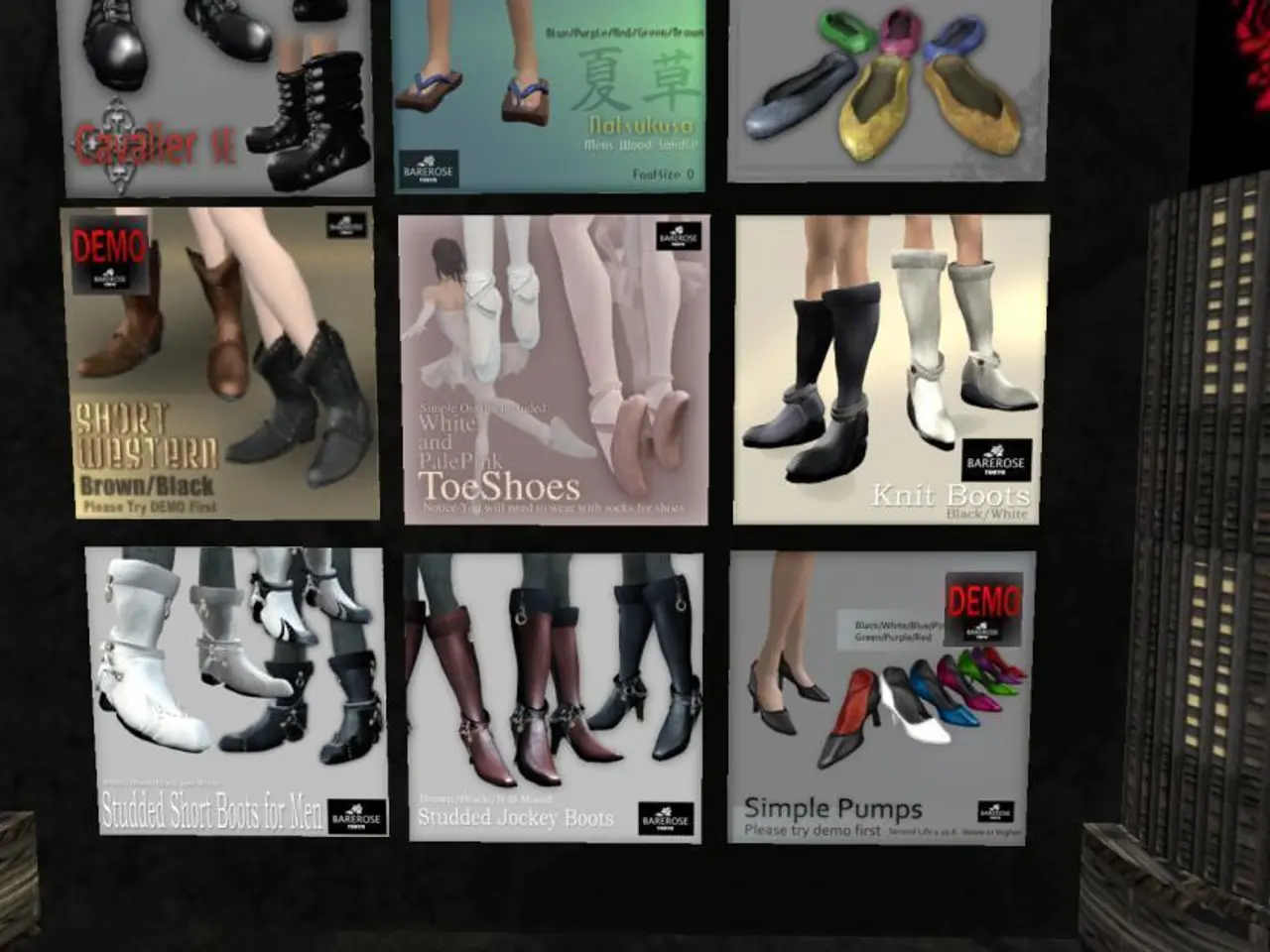Iconic Journey of Air Jordans: Climbing to the Peak of Footwear Excellence!
In the world of sneakers, Nike has established itself as a dominant force, thanks to a strategic combination of limited release tactics, celebrity endorsements, and innovative marketing. This approach has helped the company rise to the top of its market and maintain its cultural relevance.
Limited Release Strategy
Nike deliberately releases Air Jordans in limited quantities, creating scarcity that fuels hype, exclusivity, and urgency among consumers and collectors. This approach turns sneakers into coveted items and often leads to high demand, long waiting lists, and substantial resale value. For example, limited packs like the "Best Hand in the Game" AJ1s commemorate Michael Jordan's achievements with unique colorways, reinforcing the brand's prestige and desirability.
Celebrity Endorsements
The partnership with Michael Jordan was revolutionary, positioning him as both a basketball and cultural icon. This association linked the shoes with elite athletic performance and coolness, sparking the foundation of sneaker culture. Over time, Nike expanded this strategy to include hip-hop artists and modern celebrities, embedding Air Jordans deeply into diverse cultural narratives of style, history, and community.
Marketing Tactics
Nike leverages cutting-edge digital marketing strategies to engage customers beyond just product sales. With apps like SNKRs offering augmented reality experiences and exclusive content, as well as community-building through social media campaigns like #YouCantStopUs, Nike enhances customer loyalty and integrates its brand into the lifestyle and fitness journeys of consumers. This digital engagement complements the scarcity model by enhancing storytelling, user participation, and emotional connection.
Collectively, these elements have propelled Air Jordans to iconic status and helped Nike maintain its competitive edge. The limited releases build anticipation and exclusivity, celebrity endorsements provide aspirational appeal, and innovative, community-focused marketing fosters long-term loyalty and the growth of sneaker culture worldwide.
It's worth noting that Nike's demand forecasting is crucial for manipulating supply and demand in the sneaker market. The company's success with Air Jordans and its influence on sneaker culture stem from a strategic balance between limiting supply to create hype and ensuring there is enough supply to meet demand. This balancing act ensures that products are not so limited that resellers can charge huge premiums, but still keeps Nike and Jordan at the forefront of the sneakerhead conversation.
The hype surrounding limited releases contributes to boosted sales for later releases of the same line, as demonstrated by the What The LeBron X and What The LeBron XI. The strategy of creating hype and just-barely filling demand improves the overall brand value for Nike. Nike often follows an initial release with a later replenishment or "re-release" to capitalize on heightened demand.
In conclusion, Nike's success in the sneaker market is a testament to its strategic approach. By combining limited release tactics, celebrity endorsements, and innovative marketing, the company has managed to create a sense of exclusivity and scarcity that drives demand, builds brand loyalty, and keeps Nike and Air Jordans at the forefront of sneaker culture.
In the realm of supply chain management, Nike's strategic approach of limited release tactics for iconic sneakers like Air Jordans mirrors the principles of scarcity and exclusivity, managing demand to maintain cultural relevance in sports and beyond, such as football.
Nike's clever manipulation of demand, as seen through the limited release strategy and follow-up re-releases, has parallels in other industries, like the offerings of highly sought-after collectibles, creating a marriage between supply chain management and sports culture.







